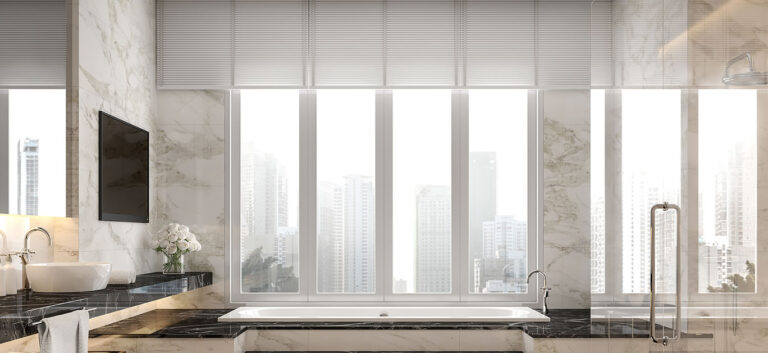There’s a growing movement in home design that isn’t about open concept kitchens or matte black fixtures—it’s about intelligence. More specifically, how your home thinks, adapts, and responds to your needs, often without you lifting a finger. And while smart thermostats and voice assistants usually get all the attention, one of the most surprisingly transformative additions to this tech-savvy lifestyle is something far more subtle: automated window treatments.
Yes, we’re talking about motorized shades, electric blinds, and smart drapes—whatever you prefer to call them, they’re becoming an essential part of modern home life. They look sleek, function smoothly, and quietly make your home more efficient, secure, and beautiful.
At a glance, the appeal is obvious: imagine raising all the shades in your living room with one voice command or having your bedroom blinds open gently at sunrise to ease you into the day. No more fiddling with tangled cords or chasing sunlight around the house. But the benefits go far deeper than just convenience.
Let’s talk energy. According to the U.S. Department of Energy, up to 30% of a home’s heating and cooling energy can be lost through windows. Automated shades solve for that by acting as intelligent insulation. You can program them to close during peak sun hours to keep rooms cool or to open during winter mornings to let in natural warmth. Pair them with a smart thermostat, and suddenly your home is managing itself in the background—more efficiently than you ever could manually.
Privacy and security are another major win. With smart scheduling, your electric window shades can close automatically at dusk, even when you’re not home, giving the appearance that someone is. They also add peace of mind to large, street-facing windows or glass doors without sacrificing style. For those working from home or raising families, that kind of subtle protection is more valuable than ever.
And if you’ve invested time (and money) in creating a beautiful home interior, smart shades help you protect it. UV light is notorious for fading fabrics and damaging wood finishes. Automated shades adjust throughout the day to control how much sunlight enters your space, extending the life of your furniture and finishes while preserving the look you’ve worked so hard to curate.
Aesthetically, these aren’t clunky or industrial anymore. Today’s smart shades come in a wide variety of high-end fabrics and finishes, from soft sheer linen to blackout thermal materials, so they look as refined as they function. You can go minimalist and sleek or warm and textural—it all depends on the mood and style of your space.
Installation has also come a long way. With both hardwired and battery-powered options, adding automated window treatments no longer requires a full home renovation. Some models even come with solar-powered battery packs for added sustainability. And most systems now work with your existing smart home devices—think Alexa, Google Home, Apple HomeKit—so you don’t need a separate ecosystem to get started.
The market agrees: a report from Grand View Research estimates that the global smart window treatment market will surpass $11 billion by 2030. Why? Because consumers increasingly value homes that are not just stylish, but responsive. That align with the rhythms of daily life. That let you work, relax, entertain, and sleep more comfortably.
It’s a shift in how we define luxury. Not as something loud or oversized, but something that works invisibly, intuitively, and on your behalf. Smart window shades do exactly that—they create comfort and beauty in a way that feels effortless.
So, whether you’re designing your dream home, upgrading your current one, or just looking for the next addition that actually makes a difference, consider this: sunlight and privacy don’t have to be things you manage manually anymore. Your home can—and should—do it for you.
And the best part? You’ll never look at traditional blinds the same way again.

